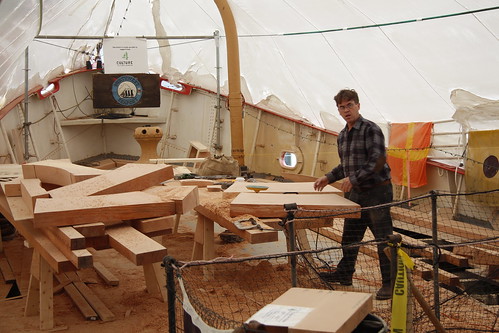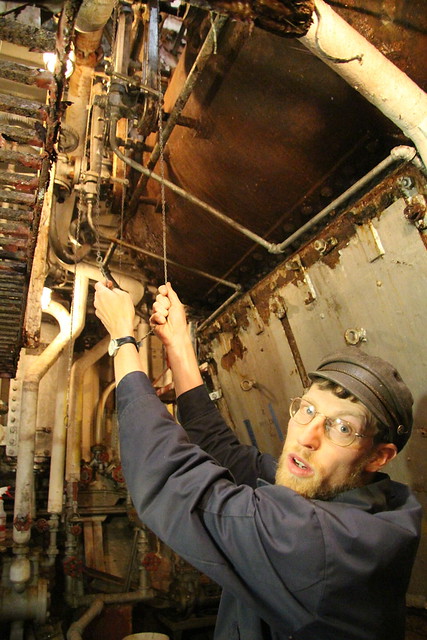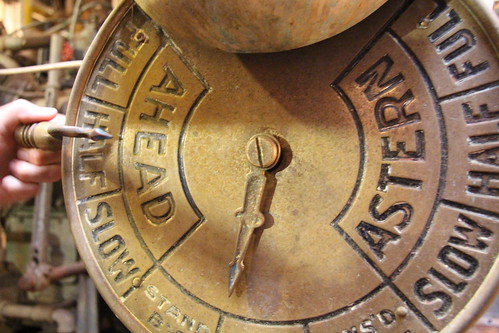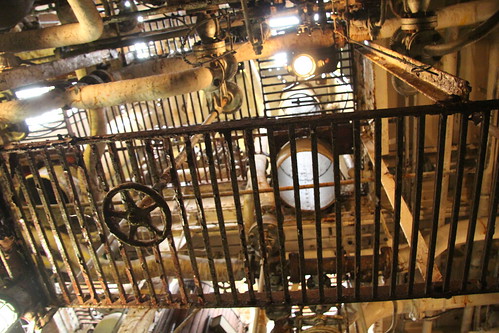Northwest Seaport, a maritime heritage organization, is restoring a 109–year-old Lightship (No. 83) called Swiftsure.
The Swiftsure is to become a floating museum, and in their effort to revive the ship, they hope to discover the rich, nuanced layers of history the ship contains and also share the lore of bygone days with the public by having them actively participate in the project. Swiftsure is open to the public and floats at the Historic Ships Wharf at Lake Union Park.
According to Nathaniel Howe, the Vessel Manager & Nautical Archeologist for Northwest Seaport, 179 lightships were built between 1820 and 1952, and of those, 17 remain, half of which have become floating museums.
Built in 1904, Swiftsure was first forged in the Carnegie steel furnaces in New Jersey. That same year, America gained control of the Panama Canal and engineers started the daunting challenge of opening the earth for naval passage. Indeed, the Swiftsure was fabricated from an era of unprecedented strides in engineering and industry.
The 136-foot, steel-hulled vessel spent most of its enterprise as a lightship for the Coast Guard enduring the pandemonium of the Pacific. It was stationed as far south as San Francisco Bay and as far north as Swiftsure Banks. During World War II the Swiftsure’s conspicuous red hull was painted black and patrolled the waters near San Francisco Bay. Armed to the teeth with deck cannons, the crew blasted a warning shell across the bow of an unannounced friendly vessel.
Later, the Swiftsure was used as a relief vessel in the waters off the mouth of the Columbia River, the Umatilla Reef, and eventually, the Swiftsure Banks. Ships were often named after the locations they served and therefore the no. 83 became the Swiftsure.
Northwest Seaports acquired the ship in 1966 and the used the ship for educational purposes, but the condition of the vessel finally reached a point when it needed some help back in 2007. A preliminary engineering assessment was conducted in 2008, which according to Howe, meant going through the ship top to bottom to see what could be salvaged.
Last year, Northwest Seaport started the expensive process of restoring the ship, starting with a 90-day drydock period where the hull was repaired. Lake Union Drydock Company donated over $20,000 in service to the project.
Now restoration of the wooden deck and the electrical system has begun and is headed by Shipwright Brian Johnson (Ballardite) and Howe. The Ballard News-Tribune featured Johnson in a past article that showcased his exceptional shipwright talents.
 Shipwright, Brian Johnson, working on the deck.
Shipwright, Brian Johnson, working on the deck.
Northwest Seaport has opened the ship to the public for viewing and volunteer opportunities as progress slowly moves forward. Moreover, shipwright apprenticeship programs are being offered through a partnership between The Center for Wooden Boats and Northwest Seaport.
“I think fundamentally it’s a restoration project but is a community rebuilding project as well. It’s also a much needed maritime training opportunity and a workforce program. …Not long from now, maritime jobs will need new workers and there’s not many programs that can offer what we do here,” said Otto Loggers (Ballardite), Executive Director of Northwest Seaport.
Howe started working for the Seaport five years ago and lived on the Northwest Seaports other project boat, the Arthur Foss Tug Boat, which celebrates its 125th anniversary this year.
“The 2008 assessment launched the whole process of what we are doing now. … The old deck was rotten and we knew it had to go but we weren’t sure at first what we wanted to do,” said Howe.
They considered a laminated ply deck or a rolled steel deck, but those options didn’t stay true to restoring the vessel as close to its original state as possible.
“We decided on the old plank deck because it’s the most cost effective, the most historically accurate and easiest to maintain. For a first the right way was also the cheapest way. When does that happen?”
Eleven thousand board feet of old growth Douglas Fir was ordered for the project from McClanahan Lumber, and Howe said there isn’t a knot in the pile. However, wood of that caliber is becoming hard to come by.
“We are making a few adaptations that focus on the longevity of the deck and make it easier to maintain. When it (wooden deck) rotted they just replaced the timber. We don’t have that option because the next time we have to replace the wood it’s very likely that the timber will not be there. So we are designing it with its new function and the shortage of timber in mind.”
With the Swiftsure's new function, one of the design features is to add more of a dramatic crown in the deck so that water rolls off easier since the ship is permanently moored.
Another potential problem they are considering in the design is the shadow of the smoke stack falling on the same place everyday. The moisture that would accumulate could lead to premature rotting.
“We are in the Pacific Northwest. First comes the moisture, then the algae, then the moss and then you’ve got problems,” said Howe.
The lower deck is also under construction. Seaport volunteers and apprentices work closely with Johnson and Howe to either replicate the interior as much as possible or replace it in a way that fits the context of the boat.
“Our whole history is wrapped up in this one boat.”
Howe said that the electrical system alone tells a story. When the ship was first constructed they used oil lamps, then electricity was installed and then later RADAR. As the technology changed the electricians would simply “piggyback” the new system with the old and therefore much of the old wiring and fixtures remain. Furthermore, Howe said that the same goes for the engine. Once powered by sail, and then later steam, the Swifsure needed an entire room for it's engine. Eventually a much smaller space was needed for a diesel engine, yet a huge room with steam engine components remains.
 Howe pulling on old steam regulators in the engine room of the Swiftsure.
Howe pulling on old steam regulators in the engine room of the Swiftsure.
“As an archeologist this project is very intriguing because when you approach a project there is sometimes a specific question you have in mind that the artifact could answer. Other times you find a ship on the seafloor and you focus on what it is, what’s its history and what can it it tell us -- this ship is a mix of both.”
“It’s what we would call a macro-artifact. It’s so large that it’s kind of its own world – an immersive environment. When you’re inside it, you would never think it’s 2014. Yet, for me there are so many sites that tell a particular story. ”
Howe showed the Ballard News-Tribune the officer’s quarters directly below where the deck guns were placed during WW II. He pointed out how the steel beam overhead had been warped from the pressure of the cannon blasts. In addition, Howe showed the huge stove in the galley where generations of cooks prepared meals for the crew.
 The engine order telegraph remains long after radio and telephone service replaced communications on the Swiftsure.
The engine order telegraph remains long after radio and telephone service replaced communications on the Swiftsure.
Refurbishing of the galley and the officer’s quarters are all pieces in a puzzle that Loggers said, when finished, will serve as a place people can learn and celebrate the maritime history. He hopes that eventually guests will be able to use the floating museum for educational purposes and as a venue for special events.
“We have to engineer this project looking down long term and what it will take to preserve the ship while at the same time being true to the historic layout and the methods that go into it, because we are also teaching.”
 Looking up to the second level of the Swiftsure from the engine room.
Looking up to the second level of the Swiftsure from the engine room.
However, funding for the project has been slower than expected. Loggers said that although the project had funding at the beginning from a state heritage grant and a federal transportation-enhancement program, those funds are nearly exhausted, and Northwest Seaport is looking for partners that share their vision and can help
keep the project afloat. One way the general public can contribute via a ‘plankowners’ program and purchase of deck planks to support the restoration project.
“The goal of Northwest Seaport is not just preserving the ship but also all the skills that go into preserving the maritime industry."
For more information visit http://nwseaport.org/.